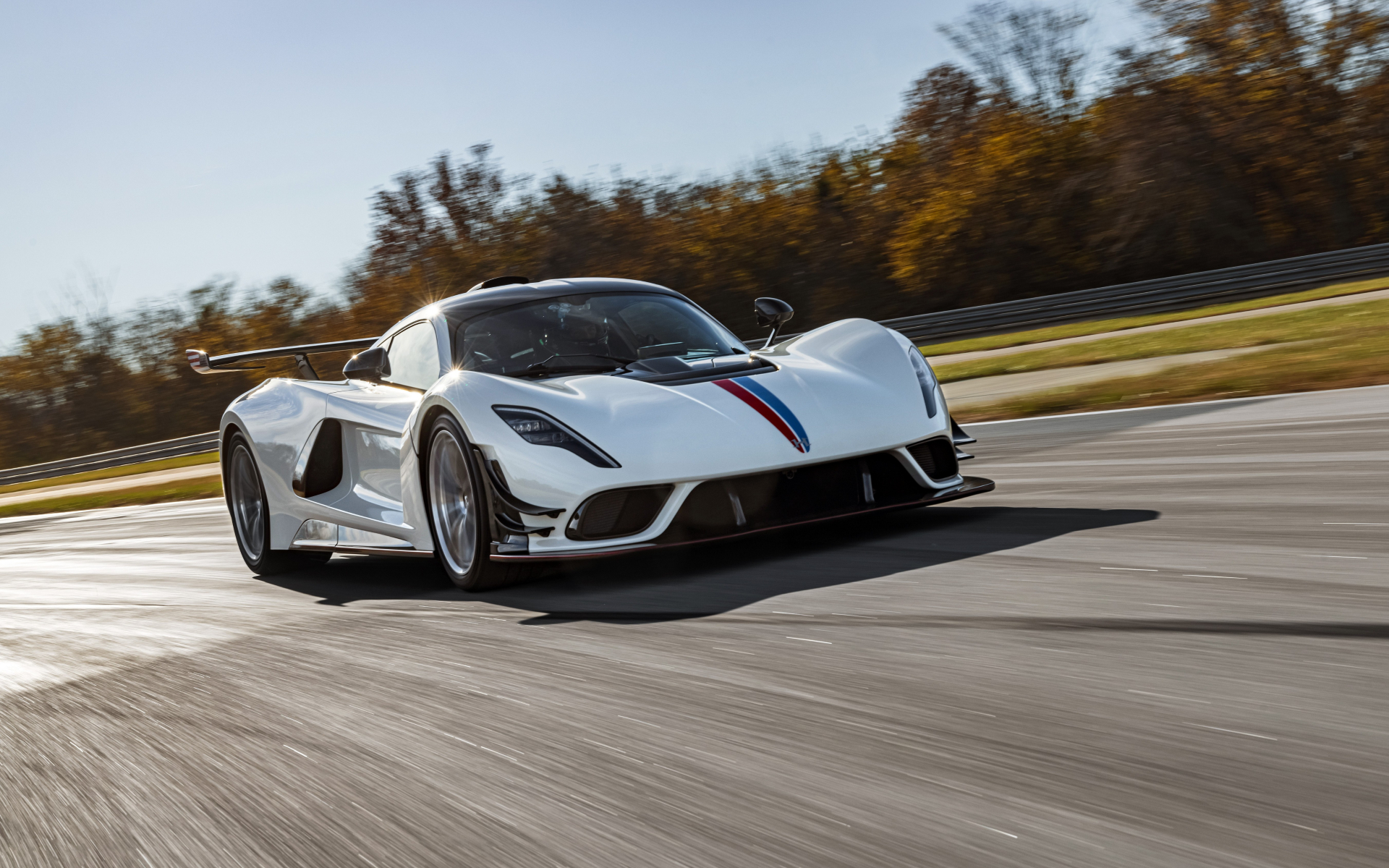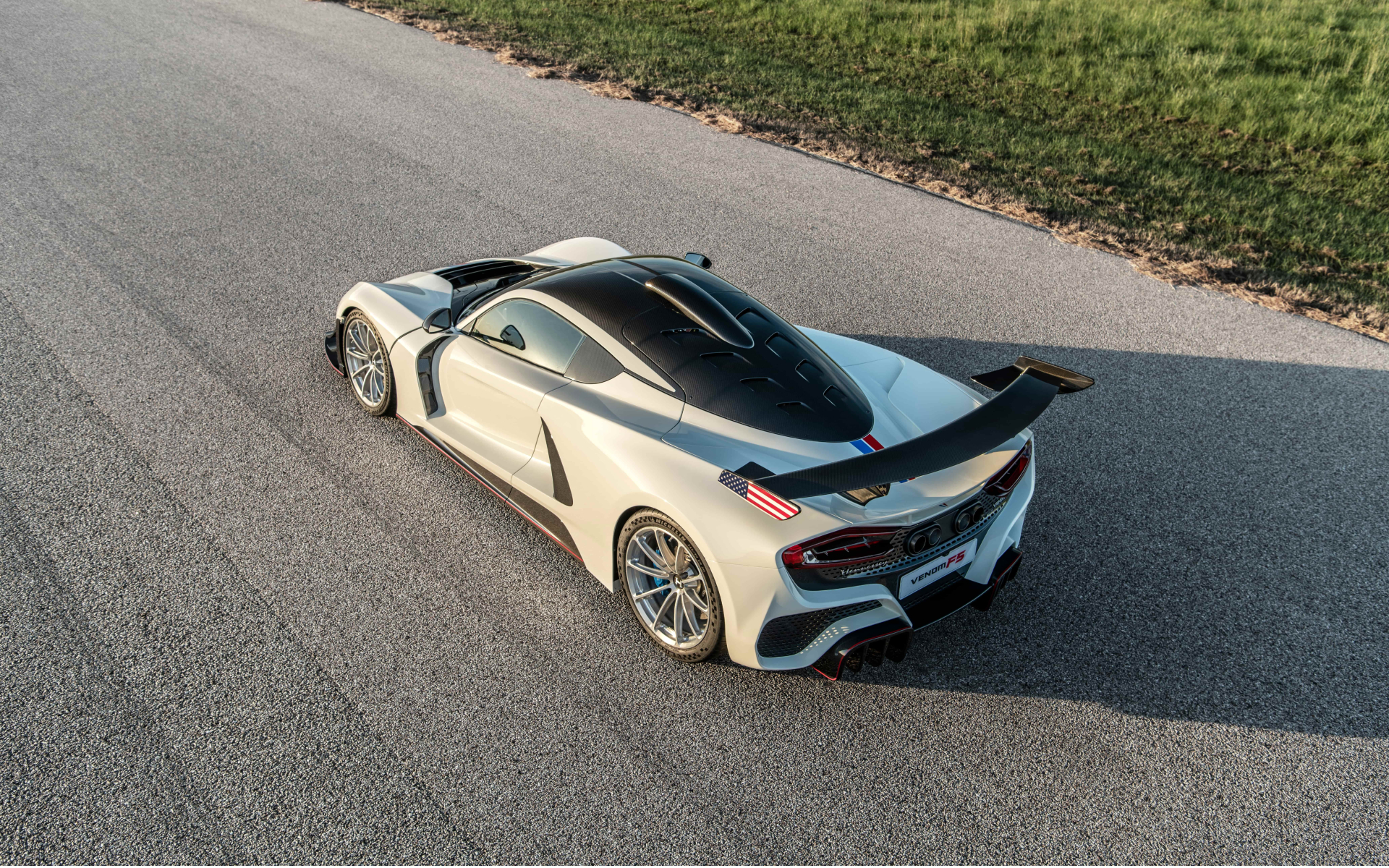
John Hennessey is one of the automotive world’s true characters, up there with the likes of Peter Wheeler and Enzo Ferrari when it comes to crazy, ambitious ideas that somehow keep panning out. His latest endeavor involves breaking the production vehicle speed record again. This time, Hennessey would like to do it in a car his company has designed from the ground up.
That car is the Venom F5, and it’s designed to do more than go fast in a straight line. Hennessey sees it as the “decathlete of hypercars,” so you can expect to see it setting the standard in all manner of events. Recently, it set the production car lap record at COTA — beating a time set by the Czinger C21 and rounding the circuit a whole seven seconds faster than the McLaren P1.
But the production vehicle speed record is still the big one, and there’s one major challenge standing between Hennessey and that title. The Texas-based CEO recently chatted with The Manual, and the upcoming record attempt was obviously one of the topics we discussed. It’s a decade since one of Hennessey’s previous creations, the Venom GT, achieved that very goal, and the company is intent on marking the anniversary by doing it all again.
During our chat, Hennessey told us exactly what the holdup was. It doesn’t have anything to do with the car itself; he believes it’s already the fastest-production car on Earth. Instead, it’s something of a scheduling issue.
Finding a venue for the record attempt is pretty difficult
“Where can we go out and attempt to run a two way average of over 300 MPH?” Hennessey says.
The supercar manufacturer believes his car needs five or six miles to adequately accelerate to the speed record and still have enough room to come to a safe stop afterward. Hennessey goes on to explain how the traditional options in the United States may not be adequate.
“There are some long runways. There’s the runway where we set the record with the Venom GT 10 years ago at NASA in Florida, where they used to land in the space shuttle. From end to end, it is 3.2 miles. So you can really only accelerate maybe the first two and a half miles. Then you need that last seven or eight-tenths of a mile to slow the car down.”
Hennessey also told The Manual how some of his close rivals may have an advantage when it comes to venues, saying: “[When] Bugatti ran 304, Ehra-Lessien is every bit of 5.5 to six miles long. And then you have this high-speed banked kind of oval on either end of the runway where you can build up speed before you even get onto that long straight away.
I think the Bug is hitting that straight away at 180 miles an hour. So, they’re already…just under 200 miles per hour, and then they have another… 5.6 miles to accelerate. [At] NASA, the car has to be stopped at the end of the runway because after that, it’s just grass and a swamp full of alligators.”
Alternatives may be available
While it may be difficult to find a runway long enough to safely break a world speed record on, Hennessey is optimistic a solution will be found this year. One promising alternative will see the record potentially broken in the company’s home state of Texas.
Hennessey says: “We’re looking at some other alternatives. We’re looking at possibly a Texas highway, possibly later this year and we’re having conversations with the state regarding that. They seem open to it but it just takes time to sort that out and plan that out. Ideally, having something longer than a runway would be ideal for having the room to go ahead.”
So the next few months could see a car tear along a Texas highway at over 300 miles per hour. Even if the record is set, there’s a question of how long it will last. Bugatti has announced its next vehicle will be powered by a hybrid V16 engine. The French manufacturer has yet to unveil the exact vehicle that the powertrain is going into — but whatever it is, will undoubtedly be fast. One thing is certain, though. With 1817 horsepower and enough grunt to potentially beat anything currently out there, the Hennessey Venom F5 might well be the fastest ICE-powered car the world has ever seen.





